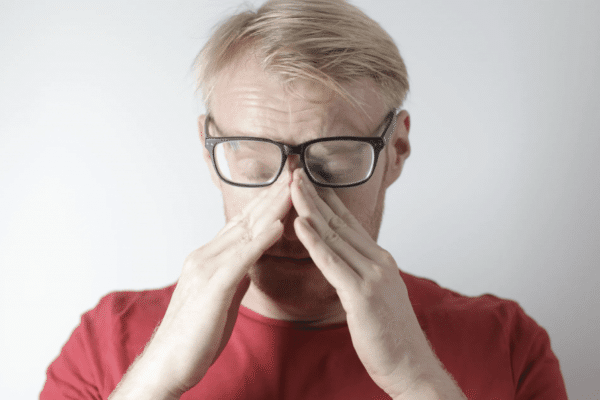Drug Detoxification Process Explained

Medical professionals often define addiction as a chronic disease in which drugs force a physical dependence. In most cases, until a point where a patient cannot adequately function without their drug of choice.
While the primary goal of the detoxification process is to eliminate the drug, abruptly separating oneself from it can result in life-threatening withdrawal symptoms depending on the substance.
Additionally, detoxification should solely be viewed as the first step towards recovery. While toxins can be expelled from the body with medication, this does not suffice in the overall treatment process.
Detoxification is the first step that caters to the physical symptoms rather than addressing critical psychological issues. Comprehensive treatment will address all these issues eventually.
First Stage of Drug Detoxification
Here’s the truth:
The initial stage of the drug detoxification program will be tough – because of this, the presence of a medical professional is necessary.
Amongst some of the most common withdrawal symptoms, you may feel anxiety, sweating, insomnia, chronic muscle aches, and agitation.
It should also be noted that, in some cases, more extreme behaviors are also a possibility. These include violent outbursts, symptoms of psychosis, or even symptoms of other mental illnesses.
We understand that it seems like a frightening situation to be in. However, remember that it will all be worth it in the end, as you will live better and feel better.
A Three-Step Process
Detoxification is not a straightforward task but instead involves a three-step process: evaluation, stabilization, and preparation.
Evaluation
The preliminary step is designed as a basis or foundation for any further treatment needed in the future. During an assessment, physicians do tests and are mindful of finding any drugs in the patient’s system.
They also measure the patient’s concentration and identify potential mental or physical disorders. This in-depth assessment ensures that medical professionals choose adequate treatment based on the individual’s unique set of needs.
Stabilization
The second part of the detox process involves discontinuing any drug abuse by using medication-assisted treatments. Of course, this is all done while professionals lend their knowledge and expertise in providing psychological support.
The ultimate goal is to create a stable, sustainable, and substance-free life. So, these professionals will educate patients about the steps needed to achieve that and what is expected of them during and after recovery.
This is the stage in which doctors often involve the patients’ family and friends as moral support.
Preparation
The final piece of the puzzle is designed to stress the importance of follow-up treatment and the dangers of failing to adhere to a continuum – in many cases resulting in a relapse.
Health professionals obtain a written agreement from the patients, stating that they are involved and willing to continue their treatment even after the drug detox process.
This third part is arguably the most crucial step in the detox process. It touches upon other more important matters, including preparing for active rehab in the real world.
Family members and friends will often be involved in the preparation stage, as love and support are invaluable to the overall recovery process.
Types of Drug Detoxification
It’s essential to note that there are many different types of detoxification options that might raise the interest of patients.
As a general rule of thumb, the severity and intensity of the withdrawal symptoms will influence which type of detox you should opt for.
Inpatient Detox
Previously considered the most popular choice, inpatient detox ensures that adequate medical care is available in case of an emergency. This is one of the main reasons inpatient detox has been named the most effective method of eliminating drug abuse habits.
In this scenario, patients will be admitted to a clinic with around-the-clock support from medical professionals.
Outpatient Detox
Gaining popularity nationwide, outpatient detox is an alternative for those whose addiction is less severe.
This option is for those who can detox in the comfort of their own home. Those who have pressing work or family commitments that don’t allow them to be away from home for extended periods will also find this more suitable.
Opioid Detox
Opioid detox can occur in outpatient and inpatient treatment through medication options that allow the safety and comfort of the patient. During this detoxification process, medications will reduce opioid dependence and alleviate any adverse withdrawal symptoms.
Generally, medical professionals use methadone and buprenorphine. These are renowned as effective partial or full opioid agonists that can stabilize a patient’s condition instead of further damaging their mental or physical state.
Opioid detox involves the patient gradually weaning off the drug – reducing the intensity of withdrawal symptoms.
Different Lengths of Time
As mentioned in the above paragraphs, the detox process will ultimately depend on the severity of the addiction and the drug in question.
Due to this, you may find different options available, especially regarding the overall length of time needed to complete the treatment.
These can include:
Short-term Medicated Detox
This option incorporates the use of a short-term medication plan. The patient is subject to specific medications designed to relieve any harmful withdrawal symptoms during this plan.
Long-term Medicated Detox
Typically used for treating opioid addictions (i.e., heroin), long-term medicated detox involves receiving the correct medication dosage to stop the patient from experiencing withdrawal symptoms entirely.
The dose will gradually be lowered until the individual is completely free of any drug use habit. In other words, this is very similar to the Opioid Detox that was mentioned above.
‘Cold Turkey’ Detox
The following approach encompasses cutting off the use of all substances and drugs at once while medical supervision is on hand – in case of emergency, severe pain, or discomfort.
However, the downside is that patients will experience all withdrawal symptoms in all respects. Additionally, no medication will be available to comfort or relieve these side effects. As a result, this is the most difficult form of detox.
Conclusion
Detoxification is the first step to a more complex process meant to keep a patient from resuming the habit of drug use. A successful recovery is dependent on taking care of your mental state. In addition, support groups and therapy sessions are also essential in achieving a substance-free life.
It has been documented and researched that Cognitive Behavioral Therapy (CBT) can curb negative behaviors by recognizing and avoiding triggers that would otherwise cause you to relapse.
To reiterate, this process may be hard, but it will be more than worth it once you’re able to think clearly, get your life back on track, and move forward towards achieving your goals and dreams.


